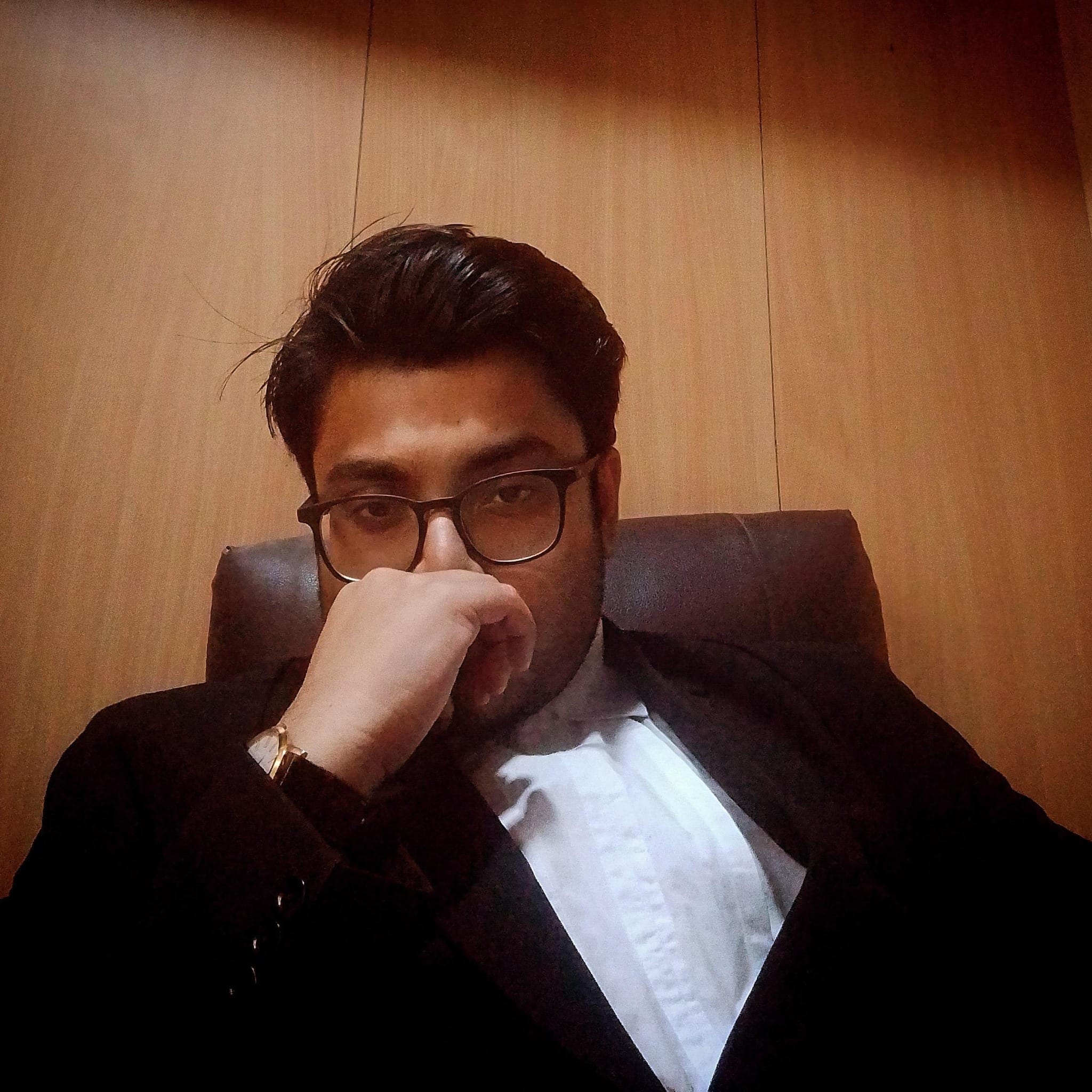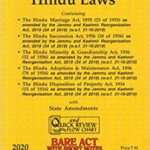Hinduism, as known to be one of the largest religions in the world has a separate set of laws like any other personal law in India. In this article, we will discuss in brief about marriages in Hindu law and a few other related topics.
In a country like India, our nature of the constitution enabled us to keep personal laws i.e different laws for different religious communities, whether these personal laws are true and efficient is another thread altogether.
Table of Contents
Introduction to Hindu marriage
If we turn over the pages of our Hindu Shastras; or if we have a glance over ancient Hindu Jurisprudence, we find that the Hindu marriage ceremony is the last of the ten sacraments or the purifying ceremonies. It is a religious necessity rather than a mere physical luxury.
Hindu Marriage is a tie that can never be broken and it is a relation established from birth to birth, according to ancient Hindu Law. Some Smritikars have said that even death cannot break the relation of wife and husband, which is sacred and religious. Their Lordships of Calcutta High Court held in the case of Manmohini v. Basant Kumar, that “Hindu marriage is more than a sanskar (sacrament).
It is the union of flesh with flesh and bone with bone…” The object of marriage, according to the Hindus, is the getting of children and the proper performance of religious ceremonies. The sanctity of marriage was held to be so great that it was regarded to have some divine origin and was thought to be predestined. The husband receives his wife from the Gods and must always support his wife if she is faithful. As long as her husband is alive, the wife is enjoined to regard as her God.
A wife is declared to be half the body of her husband i.e Ardhangini, equally sharing the fruits of pure acts with him. The husband, however, is one person with his wife only for religious purposes and not civil according to Manu.
Manu visualizes an ideal Hindu family when he says, “Divine blessings abide in the household when female members receive the honour. When they are not honoured no act or ceremony bears its proper fruit. That family perishes in no time where the female members pass their days in sorrow. Blessed is the family in which the husband is pleased with the wife and the wife with the husband”. Therefore, a Hindu bride is not mere a cattle to be given away by the father or taken as such by the bridegroom.
In Shivanandy v. Bhagavanthymma, (A.I.R. 1962 Mad. 400), the court observed that marriage is binding for life because the marriage rite completed by saptapadi (seven steps) before the consecrated fire creates a religious tie, and a religious tie when once created cannot be untied. It is not a mere contract in which a consenting mind is indispensable.
In ancient Hindu Law women were to be respected and honoured. Manu has said, “women must be honoured and adorned by their father, brother, husband and brothers-in-law who desire their own welfare. Where women are honoured, no sacred rite yields rewards”. Only the present Act has introduced divorce or dissolution of marriage. None can trace out divorce in ancient Hindu Law.
The Vedic rules expressly declare that a man may have several wives but a woman cannot have several husbands. Mayne has commented – “In the Vedic period, the sacredness of the marriage tie was repeatedly declared; the family ideal was decidedly high and was often realised”.
Many old writers said, “A woman is half of her husband and completes him”. Manu disapproves of divorce and remarriage of women: “The husband is declared to be one with the wife. Neither by sale nor by repudiation is a wife released from her husband. Only a maiden is given in marriage”.
The ancient textual Hindu Law never allowed divorce or judicial separation except in some categories of lower castes. Remarriage is found in the text of Narada and Kautilya but the field is very narrow”.
According to them, “If the husband, be missing or dead or, retired from the world, or impotent, or degraded, in these five calamities a woman may take another husband”. But Manu opposed this idea very vehemently.
It may be noted that the concept of a Hindu marriage as a sacrament continues to exist even after the enactment of the Hindu Marriage Act. This concept is not, in any way, inconsistent with the provisions of this Act, which has laid down certain conditions for a valid Hindu marriage, and certain grounds for obtaining judicial separation and divorce.
The concept of divorce was, of course, not recognized by the ancient Hindu Law, and this is a vital innovation introduced by the law in the Hindu social framework.
Ancient Forms of Marriage
Prior to The Hindu Marriage Act, 1955 there were formerly eight forms of marriage – four approved and four disapproved.
The legal consequences of the approved and the condemned marriages were different. A wife married in an approved form was considered as a ‘Patni’ (wife) but one married in the un-approved form was not looked like a ‘Patni’ (wife).
Eight kinds of marriage:
The following were the eight kinds of marriages:
(1)Brahma:
In this form of marriage, the father or some other guardian gave the bride away in marriage without receiving any consideration from the bridegroom. In the earlier days, this type of marriage was meant only for the Brahmins. It has been observed by the Allahabad High Court that it cannot be contended that a widow can remarry in the Brahma form [Kishan v. Sheo, 32 A.L.J. 981].
(2) Daiva:
‘Diava’ which consisted in the giving away of the girl to the bridegroom who was officiating as a priest in a sacrifice, instead of his fee (dakshina).
(3) Arsha:
In this form of marriage the bride’s father received from the bridegroom a pair of cattle to be utilized for religious purpose only.
(4)Prajapatya:
This ancient form of Hindu marriage was similar to the Brahma form, except that the bridegroom didn’t need to be a bachelor. Here, the bride’s father gave away the girl saying “You two be partners for performing religious and secular duties”.
(5) Gandharva:
This type of marriage was very similar to what may be called “a love marriage” in modern times. In this form of marriage, the union was brought about by amorous desire or by a wish for domestic comfort, and mutual consent of the parties was present.
(6) Asura:
As per the ancient texts, “where a man marries a girl for gladdening her father or guardian by money, it is called Asura marriage”. Thus, this form of marriage was almost a marriage by sale, because it amounted to a sale of the daughter by the father.
(7) Rakshasa:
This kind of marriage was effected by a forcible capture of the girl after her relative had been killed or wounded in the war. It was allowed only to Kshatriyas or military classes.
(8)Paishacha:
This is the most reprehensible form of marriage which is a marriage of a girl by a man who had committed the crime of ravishing her either when asleep or when made drunk by administering intoxicating drugs. It must not be considered as an instance in which fraud is legalized by Hindu Law.
It appears that the ‘Gandharba’ and the ‘Paishacha’ marriage were preceded and caused by sexual intercourse, in the first case with consent of the girl and in the second case by fraud. The first four were called the ‘approved’ and the last four were known as the ‘unapproved’ forms.
Today most of the subjects of Hindu Law has been codified. Here are some important Acts given below :
- Hindu Widow Remarriage Act. 1856.
- Prevention of Child Widow Act. 1929.
- Hindu Women’s Right to Property Act. 1930.
- Hindu Women’s Right to Separate Residence and Maintenance Act 1946.
- Hindu Succession Act. 1956.
- Hindu Marriage Act. 1955
- Hindu Adoption & Maintenance Act. 1956.
- Hindu Minority and Guardianship Act. 1956.
Source:
Dr. Paras Diwan, “Modern Hindu Law”, Allahabad Law Agency, 2008, pp. 1 – 604.

Trying to learn the art of advocacy.
Practicing at the Calcutta High Court and in its vicinity.





